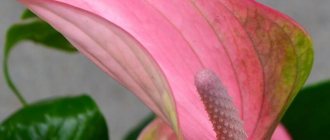Roses, thanks to their botanical characteristics and original decorative qualities, occupy a special place among plants used in landscape design as ground covers. The term “ground cover roses” is functional in nature, that is, it serves as a kind of hint about the form in which it is advisable to grow the variety you like.
Ground cover roses are an excellent option for creating carpet-mosaic flower beds and edgings on the territory of a country house or cottage.
Amateur flower growers highly value varieties of roses that have a wide growing area, which allows them to form luxurious flower carpets in their garden plots. Such plants are given the best places in rose gardens and lawns, grown in containers, and also grafted onto trunks, resulting in beautiful “pink trees” with flower cascades.
The “creeping” properties of some cultural representatives are actively used by landscape designers when creating low, lush hedges, borders, the lower level of flower bed compositions, and decorating low retaining walls.
Features of ground cover roses
Ground cover roses appeared a long time ago, by crossing climbing varieties with other species. In 1919, the first variety “Max Graf” appeared. This decorative ground cover bush quickly gained popularity and gave rise to the development of new varieties. The ground cover rose owes its rapid spread to its unpretentiousness, splendor, abundance of flowering, and high decorative significance. Even in the time of Peter I, such decorative bushes decorated the area around palaces and estates. If you need to hide an unsightly corner of the garden, or plant a large landscaped area, this type of rose is simply the ideal solution. It grows quickly, has a huge number of different varieties, and makes it possible to decorate not only garden areas, but also personal plots. A powerful root system makes the ornamental bush resistant to the natural conditions of our territory.
Ground cover roses are more resistant to frost, unlike garden roses. But not all gardeners like the fact that the bud is not glass-shaped. Despite this, continuous fragrant flowering, double growth, varied colors and disease resistance have made this species very popular.
Ground cover roses spread like a carpet along the ground, rising half a meter, forming a gentle slope strewn with flowers. These bushes look especially beautiful if they have support on one side and the ability to climb upward. Among them there are varieties with long, dense, flexible branches. The ornamental bushes that were brought out first stand out for their primitiveness. With a wide range of colors, they quickly give way to modern varieties, since they have small buds and bloom once per summer. New types of scrubs delight with their flowering until autumn. At the same time, they are not inferior to the first varieties in color, they surprise with the abundance of double flowers, the choice of appearance and size.
Advantages:
- abundance of varieties;
- long flowering;
- unique carpet decoration;
- do not require special care;
- intensive growth during the growing season;
- fast rooting;
- strong immunity to diseases;
- easy to reproduce;
- frost-resistant;
- suppresses weed growth;
- growing on rocky hills and slopes;
- Possible to grow on the balcony.
Flaws:
- correct selection of fertilizers;
- in regions with severe frosts, most varieties need additional shelter;
- pruning is necessary after the first frost;
- small buds;
- petals can fade from sunlight;
- fading flowers need to be cut off;
- When choosing a seedling, give preference to the one with a powerful root system; it will take root faster.
The advantages of ground cover roses include the fact that they comfortably coexist with perennial plants. For example, with medicinal products such as sage and lavender.
Reproduction
Ground cover roses can be propagated by layering, cuttings and clothespins.
The best way for them to propagate is by layering (you can get several seedlings) and grafting (rose hips onto which ground cover cuttings and shields are grafted).
To propagate by layering, you need to select ground cover roses in the spring, selecting the longer the annual shoot. Then choose a good place and dig a trench (depth 10-15 cm) and bend it to the ground. If you want several ground cover seedlings to emerge from the stem, then divide it lengthwise into a couple of parts (3 buds each). On each of the first of the three buds, make an incision and nail it into the soil, and the other 2 buds should not be covered with earth, but should be on top, above the ground.
We carry out this procedure along the entire shoot so that we get a “snake” or the letter W. Next year you will receive a finished ground cover plant, which needs to be cut off from the mother bush and planted in a permanent place. The winter hardiness of seedlings obtained by cuttings is much lower than the other two methods. Rose nurseries sell mostly grafted bushes with a good root system, aged 2-4 years. The rose hip transfers its excellent resistance to frost to the cultivated part by grafting, making it stronger and richer.
Varieties of scrub varieties
Depending on the size, the following varieties are distinguished among ground cover roses:
- a low-growing creeping bush about 40 cm high, no more than 1.5 m wide; 4 seedlings can be located on 1 square meter;
- a tall creeping bush grows up to 50 cm, occupies an area more than 1.5 m wide; a maximum of 2 seedlings can be planted per 1 square meter;
- small penetrating bush grows up to 60 cm upward, 1.5 m wide; 4 seedlings will fit on 1 square meter;
- a large penetrating bush up to 1 m high, slightly more than 1.5 m wide, but no more than 3 seedlings can be planted per 1 square meter.
In addition, the varieties of scrubs have the following differences:
- color spectrum;
- number of buds in the inflorescence;
- flower size;
- doubleness of petals;
- duration of flowering;
- color, lush greenery;
- richness of aroma.
Based on these criteria, the buyer has the opportunity to select seedlings of the desired type for the intended purpose:
- landscape design;
- border design;
- decorating an unsightly area of the garden;
- flowerbed decorations.
Accommodation at the dacha
Ground cover roses are good in single and group plantings. They look beautiful in flower beds, in mixed borders, in combination with sages, cornflowers, foxgloves and other perennials. They are luxurious on the terraces of a multi-level plot. The most magnificent of them is the flowering border that demarcates the zones of the garden. In rockeries, low ground cover roses with small flowers are harmonious. They are incredibly beautiful on the trunks. You will learn about beautiful varieties of ground cover roses in my next article.
Basic landing rules
In order for ground cover roses to delight with their beauty, it is necessary to take into account the following rules when planting:
- You need to choose the right landing site. The area allocated for the bush should be well lit by the sun, especially in the morning. The lowland will not be able to provide the seedlings with normal lighting.
- Make sure the soil is suitable for this flower crop. The rose will feel better on slightly acidic chernozem soil. If the soil does not meet the required parameters, it must be adapted using special solutions.
- Make sure there is sufficient distance to groundwater. Excess moisture can be removed using drainage.
- Check whether the area is sufficient for this variety. For normal plant growth, a spacious area is needed.
Where it all began
The development of ground cover roses began in the 19th century. from the Vihura rose (Rosa wichuraiana), which produced shoots 6 m long. It was this that was first used as a ground cover plant. A long time ago, some garden designers learned to pin shoots of the climbing rose variety 'New Dawn' to the soil, which we recently talked about on the site and which Vera Tyukaeva grows in Biysk, turning it into a groundcover. Much time has passed since then, and rose breeders have bred true ground cover roses, separating them into a separate garden group, which is still continuing to develop. And every year new varieties of these beautiful roses appear on the domestic and world flower markets, which in the near future will weave their carpets in many dachas.
Review of the best ground cover roses
Hello
The variety is small in stature, up to 50 cm in height, growing up to 1 m in diameter. It is distinguished by its external neatness, double buds, rich dark red color, turning into cherry over time. The calyxes are medium in size - about 7 cm, the inflorescence is dense, and can have 15 flowers. The second name is “purple carpet”. Average cost: 375 rubles.
Advantages:
- lush long flowering;
- frost resistance;
- unpretentiousness;
- disease resistance;
- bright greenery;
- beautiful buds;
- acceptable price.
Flaws:
- has no smell.
Swany
The rose bush is quite tall, reaches a height of 80 cm, and is wide in diameter - almost 2 meters. The foliage is small, shiny, and retains its bright green color for a long time. The inflorescences are large and include about 20 white buds. Distinctive features are long shoots, highly full flowers with a soft pink center, and a light, refined aroma. Popular among novice gardeners. Average cost: 320 rubles.
Advantages:
- abundant flowering;
- possibility of use as a climbing rose;
- high frost resistance;
- unpretentiousness;
- delicate smell;
- perfectly decorates the garden;
- affordable price.
Flaws:
- loves slightly acidic soil.
Ahtiar
The variety is tall, can reach one and a half meters. The shoots are arched and long. The buds are large, more than 10 cm in diameter, white, double, collected in small inflorescences. The bush is suitable for planting individually or in a group, like a border hedge. A distinctive feature is the dark rich green color of the leaves, extremely abundant single flowering. Average cost: 250 rubles.
Advantages:
- exquisite tenderness of buds;
- cluster system power;
- highly decorative;
- delicate aroma;
- budget price.
Flaws:
- the smell is very strong;
- frost resistance is average.
Nadia Meillandecor
This variety was recently bred, 13 years ago. The buds are milky, cream or yellow, but can be bicolored. The flowers have a terry furry structure, have many petals, so they keep their shape perfectly. The bush is not tall, about 50 cm, it comes into force and takes root quickly, blooms profusely and for a long time. Average cost: 400 rubles.
Advantages:
- dense buds;
- strong, rapidly growing root system;
- frost resistant;
- ideal for border decoration;
- easy to care for;
- average price.
Flaws:
- According to customer reviews, this variety can take up much more space than indicated.
Les Quatre Saisons Meilland
The bush is low, reaches a maximum of 80 cm, two years old. Blooms profusely from June to September. The buds are large, deep pink, lush, and resistant to fading. The variety is popular in countries with harsh climates. Average cost: 600 rubles.
Advantages:
- flowers are densely double;
- strong immunity to diseases;
- not afraid of pests:
- fast growth;
- high frost resistance;
- faint delicate fragrance;
- unpretentious;
- retains the bud even after rain.
Flaws:
- price is above average;
- very prickly;
- It is recommended to plant next to a small support so that the flowers do not get dirty on the ground.
Ballerina
The varietal plant is characterized by the presence of a large number of flowers, fragrant, long-blooming. The bush reaches 150 cm in height, 1.75 m wide. The buds are small, up to 3 cm, dark pink in color, gradually turning into light pink. The foliage is bright green. Average cost: 480 rubles.
Advantages:
- not susceptible to powdery mildew;
- easy to grow;
- compact;
- hardy;
- blooms for a long time;
- few thorns;
- suitable for landscape design.
Flaws:
- in the bright sun the petals fade and turn pale;
- single flowers.
Amber Sun
Flowering shrub of medium height: from 70 to 100 cm, 150 cm wide. The buds are large, up to 10 cm in diameter, yellow. The foliage is dark green. The aroma is spicy, reminiscent of rose hips. Average cost: 420 rubles.
Advantages:
- persistent immunity to diseases;
- spherical lush shape of flowers;
- long flowering of each bud;
- not afraid of frost;
- keeps the shape of petals after rain;
- few thorns.
Flaws:
- the petals fade slightly;
- grows slowly.
The Fairy
The bush is 60 cm high, about 1 m wide. It has fragrant terry buds on strong flexible shoots. The variety blooms profusely from mid-summer until the autumn cold. Used in the design of alpine slides. Loves a lot of light, as well as light shade. The flowers are small, but lush, soft pink. Popular among gardeners due to its versatility. It can be used for border decoration, as a ground cover, or as a shrub. Average cost: 590 rubles.
Advantages:
- takes root quickly;
- pleasant apple aroma;
- can be grown in pots, containers;
- frost-resistant;
- persistent immunity to disease.
Flaws:
- in the northern regions it needs additional shelter for the winter;
- the price is higher than budget.
Rody
A flowering pink shrub of compact size, up to 65 cm in height, 1.3 m wide. The shoots are arched with small leaves. The buds are medium double, dense, bright in color, like strawberries. Inflorescences contain up to 10 flowers. It blooms luxuriantly from the days of May until the first frosts in autumn. Takes short breaks between blooms. Average cost: 350 rubles.
Advantages:
- bright colors;
- blooms for a long time;
- retains color in the sun;
- tolerates winter frosts well;
- affordable price.
Flaws:
- to maintain immunity requires preventive treatment;
- does not tolerate wet weather well.
Heidetraum
The rose bush is of amazing beauty because the buds have a spherical shape, which they retain even when fully opened. The most profusely flowering shrub of this species. It takes root well and grows not only in light areas, but also in slightly shady areas. The height reaches 40 cm. Long flexible shoots form beautiful arches, strewn with waxy leaves of a dark green shade, completely covering the soil. The inflorescences bloom profusely, forming a floral carpet. Average cost: 560 rubles.
Advantages:
- high decorative qualities;
- strong immunity;
- abundant long flowering;
- bright shiny foliage;
- no strong odor.
Flaws:
- needs additional shelter in winter;
- the price is slightly above average.
Snowfield
An ornamental shrub up to 50 cm high with flexible shoots, smooth, matte leaves of a rich dark green color. The buds are white and lush. The bush is distinguished by its extreme vitality and rapid rooting. Flowering is abundant, long, starting in spring and ending in autumn. The rose decorates a flower bed, alpine hill, and lawn well. Prefers bright areas of the garden. Average cost: 320 rubles.
Advantages:
- has the most delicate delicate aroma;
- compact;
- resistant to diseases and pests;
- easily endures winter;
- affordable price.
Flaws:
- fertile soil is required;
- does not like excess moisture.
What to remember
- Selection of seedlings . Propagation by cuttings requires knowledge and experience; it is better for an amateur to buy a ready-made bush from a nursery.
- When to plant . Autumn planting is recommended only in the southern regions of Russia; in the rest of Russia, these roses are planted in April - May.
- Planting and care . Ground cover varieties are planted in holes or trenches up to 70 cm deep. They do not require special care; just fertilize the soil 2-3 times a year.
- Trimming . This type of roses is pruned a year after planting, then they grow and form on their own.
Brief characteristics of varieties
| number | Variety | Height, color of petals, number of buds in inflorescence |
| 1 | Hello | Height - 50 cm, petals are dark red, turning into cherry, in an inflorescence of 6-10 buds. |
| 2 | Swany | Height - 80 cm, white petals, up to 20 buds in an inflorescence. |
| 3 | Ahtiar | Height - 150 cm, white petals, 5-8 buds per inflorescence. |
| 4 | Nadia Meillandecor | Height - 50 cm, petals are milky, cream or yellow, 3-5 buds per inflorescence. |
| 5 | Les Quatre Saisons Meilland | Height -80 cm, deep pink petals, 10-15 buds per inflorescence. |
| 6 | Ballerina | Height - 150 cm, pink petals, inflorescences from 15 to 100 buds. |
| 7 | Amber Sun | Height - 100 cm, petals are creamy-yellow, 5-8 buds per inflorescence. |
| 8 | The Fairy | Height - 60 cm, petals are pale pink, 10-30 buds per inflorescence. |
| 9 | Rody | Height - 65 cm, inflorescences have 3-12 buds of red-strawberry color. |
| 10 | Heidetraum | Height - 40 cm, deep pink petals, 10-20 buds per inflorescence. |
| 11 | Snowfield | Height - 50 cm, white petals, 3-5 buds per inflorescence. |
Purchase from a nursery
How to choose
| |
Transportation and storage
|
Beauty and benefits
Not only gardeners, but also lovers of flower flora will agree that roses are elegant garden flowers. The grace of the buds, the variety of color shades, and the unsurpassed aroma captivate with their uniqueness. Another feature of this plant is its medicinal properties. In medicine, as well as in cosmetology, the beneficial qualities of the flower are used. At home, you can independently prepare rejuvenating and nourishing masks, use infusions for washing and toning the skin. In addition, the presence of B vitamins in the petals is considered valuable. The therapeutic effect helps to quickly heal abrasions, wounds, relieve inflammation, has a calming effect, and mild anesthesia.
When choosing ground cover rose bushes, flower growers recommend taking into account the characteristics of the garden plot, its area, and landscape design. And also think about the functional purpose of the plant. Then, by giving preference to the best varieties of roses, you can quickly achieve the desired result: decorate the area, delight the eye, enjoy the fragrant aroma, pamper yourself with natural cosmetics.
If you have experience growing ground cover roses described in the rating, or a more interesting variety of this species, tell us about it in the comments.
Reviews from flower growers
Myshma
Groundcover Hello. I don’t cover it with anything, it spends the winter under a huge piled up snowdrift. In the spring, I cut the blackened hair, rotted from the snow cap, and sometimes short! but recovers quickly.
Source: www.forumhouse.ru
Marussia
I would, of course, choose Palmengarten. Without a shadow of a doubt! Primarily due to the fact that its bush shape is much more harmonious. I tie it up a little, of course, but in moderation.
Source: vestnik-sadovoda.ru
Preparing the soil for the rose garden
Any roses cannot tolerate damp, acidic soils, so when setting up a rose garden, a gravel cushion is placed in the soil. Additionally, it is necessary to remove excess moisture using tubes or grooves. To protect against pests and weeds, the soil should be mulched, for example, with crushed bark, pine needles, grass clippings, and peat.
' For the development of roses, it is recommended to maintain the soil temperature at 17 - 20 degrees Celsius. To prevent overheating of the soil, it is also recommended to cover it with mulch.
Roses love loamy soils and cannot tolerate sandy soils, which should be enriched with compost or peat mixed with clay and turf. Soils with a high content of stones and clay are also not suitable for this beauty. Such soil needs to be improved with sand, compost, rotted rabbit or chicken droppings and must be drained.
Soil acidity should be average. Litmus paper on such soils should not turn blue (alkaline soil) or red (acidic). High acidity is removed with crushed limestone, gypsum or ash. Alkaline soils are corrected with peat, humus from leaves and pine needles.
The location of the flower bed should be changed at least once every 8-10 years to avoid soil depletion. If other rosaceae have been growing on the site for a long time (apple trees, cherries, apricots, plums, mountain ash, bird cherry, rose hips and others), then this is also not the best place for a rose garden. If there is no other suitable site for roses, the soil will need to be enriched with a mixture of clay, peat and humus.
Thanks to their ability to grow in an exquisite carpet across a variety of landscapes, ground cover roses are occupying more and more space in gardens, parks and in the hearts of gardeners. It is also impossible not to appreciate the amazing undemanding nature of these regal flowers to their growing conditions. A luxurious, fragrant garden with a minimum of care - what more could you dream of?











